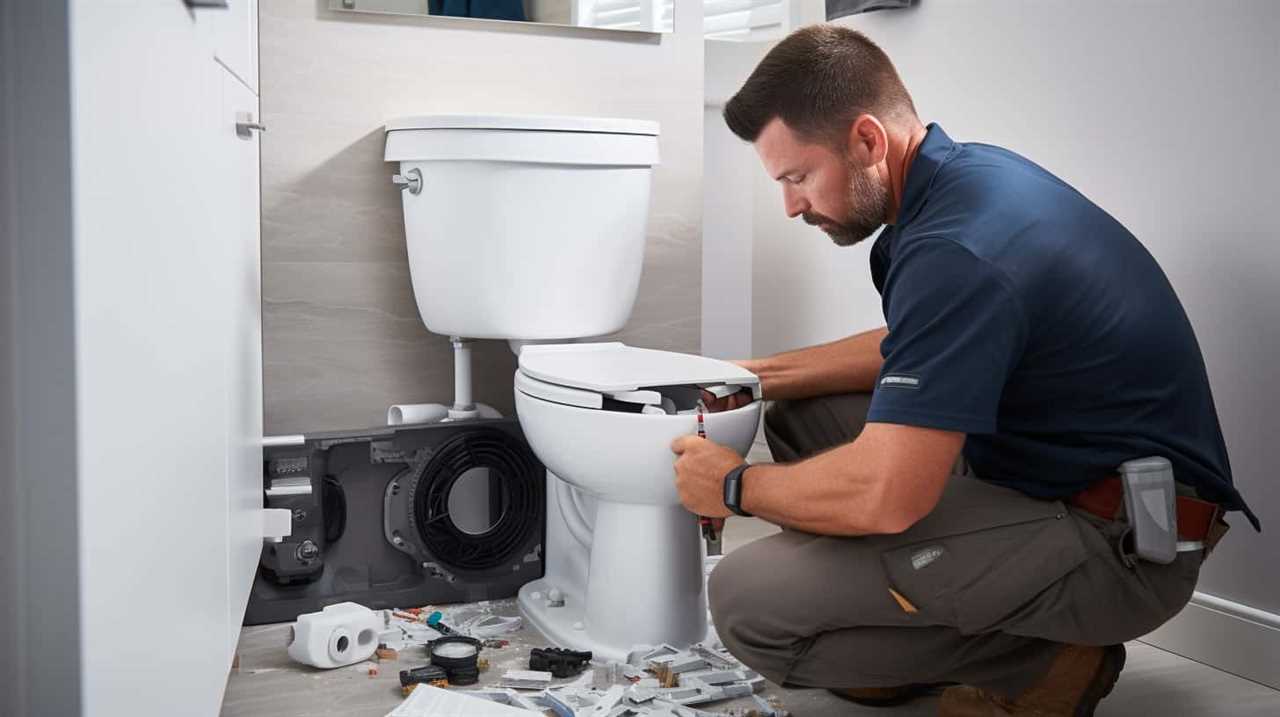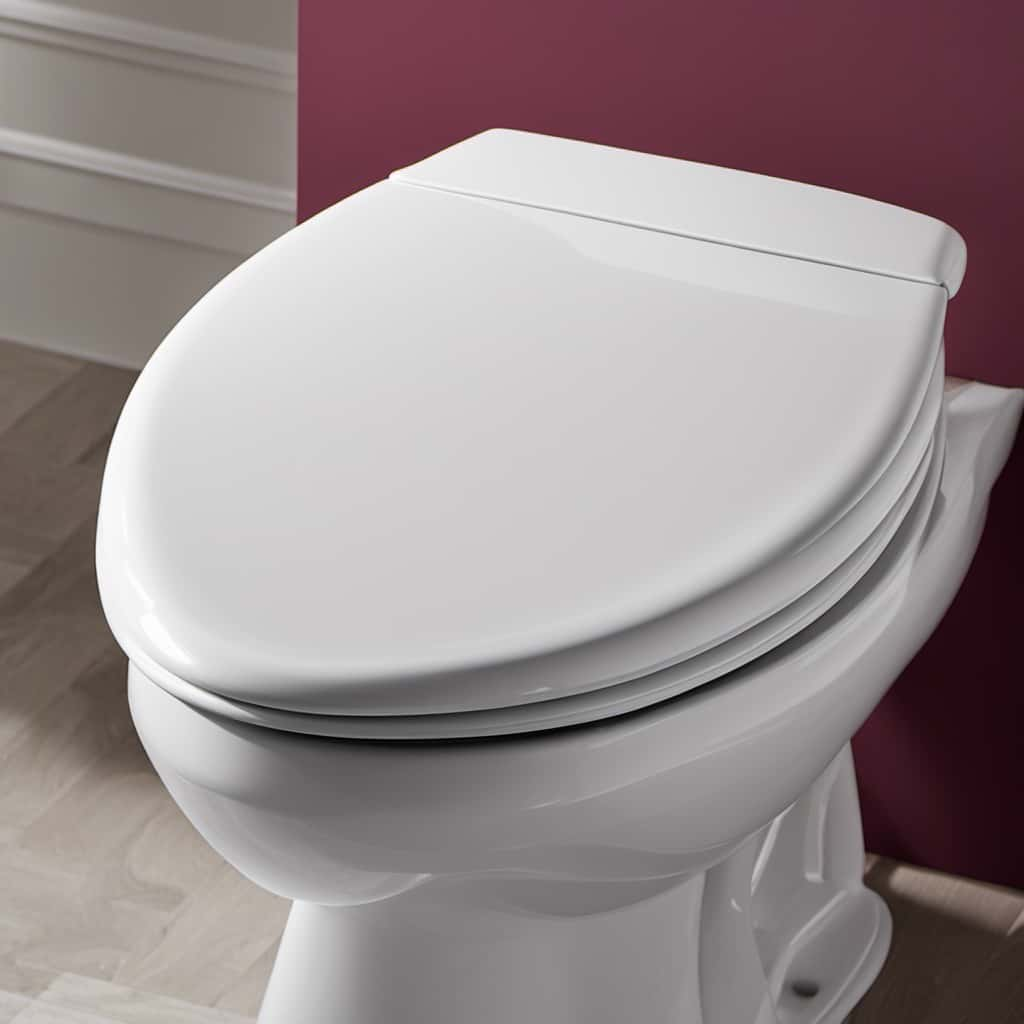Have you ever stopped to consider the impact of flushing the toilet every time we use it? It may seem like a small, insignificant action, but when you think about the amount of water wasted and the potential health concerns that can arise, it becomes clear that there’s more to it.
In this article, we’ll explore the environmental and health implications of flushing, as well as practical tips for water conservation and odor control. It’s time to make informed decisions about our daily habits.
Key Takeaways
- Flushing the toilet every time you use it contributes to the environmental burden and waste management processes.
- Mindful flushing habits and water-saving practices can help minimize the environmental impact and conserve water.
- Failing to flush can lead to the spread of bacteria, unpleasant odors, and increased health risks.
- Flushing after each use promotes good hygiene, prevents the spread of germs, and maintains a clean and sanitary environment.
Environmental Impact
We should consider the environmental impact of flushing the toilet every time we use it.
Waste management is a crucial aspect to address when discussing the environmental consequences of this daily habit. Each flush contributes to the amount of water that needs to be treated and processed, which requires energy and resources.

Additionally, the carbon footprint of waste management systems should be taken into account. The transportation, treatment, and disposal of waste all contribute to greenhouse gas emissions.
To minimize the environmental impact, it’s recommended to adopt water-saving practices such as using dual-flush toilets or installing water-saving devices.
Furthermore, proper waste management practices, such as disposing of items correctly and not flushing non-biodegradable materials, can significantly reduce the environmental burden associated with toilet flushing.
Health and Hygiene Concerns
Considering the potential health risks and hygiene concerns associated with not flushing the toilet every time, it’s important to maintain proper sanitation practices. Here are four reasons why it’s crucial to prioritize sanitation practices and disease prevention:

- Bacterial growth: Failing to flush the toilet allows bacteria and germs to multiply, increasing the risk of spreading diseases such as gastrointestinal infections and urinary tract infections.
- Odor control: Flushing removes waste and helps control unpleasant odors, promoting a cleaner and more hygienic environment.
- Cross-contamination: Neglecting to flush can lead to the transfer of bacteria from the toilet bowl to surfaces in the bathroom, potentially contaminating toothbrushes, towels, and other personal items.
- Overall hygiene: Flushing after each use helps maintain a high standard of hygiene, reducing the chances of contracting illnesses and promoting a healthier living environment.
Water Conservation
To address the issue of water conservation, it’s important to examine the amount of water that can be saved by adopting mindful flushing habits. By implementing water saving techniques and practicing sustainable bathroom practices, individuals can contribute to the conservation of this precious resource.
One effective technique is installing a dual-flush toilet, which offers the option to use a smaller flush for liquid waste and a larger flush for solid waste. This can significantly reduce the amount of water used per flush.
Another technique is to place a filled water bottle in the toilet tank to displace water, reducing the amount used with each flush.
Additionally, fixing any leaks promptly and avoiding unnecessary flushes can further conserve water.
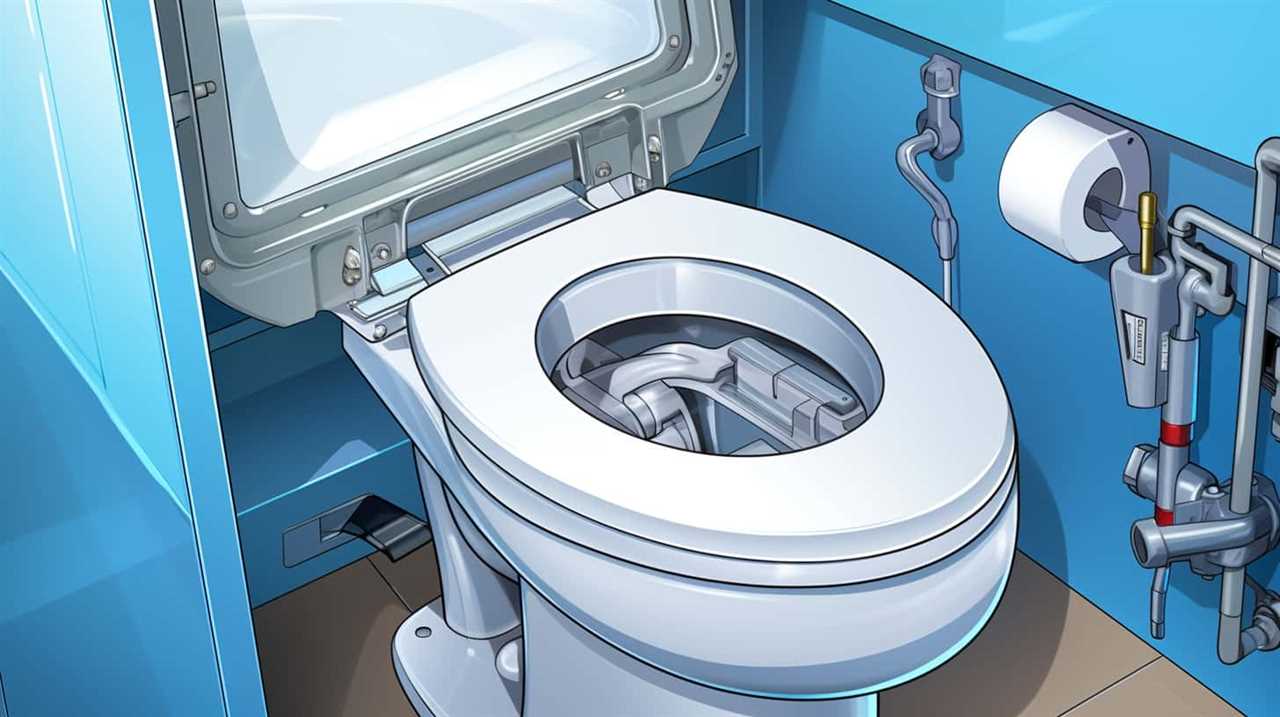
Odor and Bacteria Control
To effectively address odor and bacteria control, it’s crucial to understand the potential risks associated with not flushing the toilet every time it’s used. Neglecting to flush can lead to a buildup of bacteria and unpleasant odors in the bathroom. Here are four important points to consider when it comes to toilet maintenance and plumbing issues:
- Bacterial growth: Failing to flush allows bacteria to multiply, increasing the risk of infections and illnesses.
- Odor buildup: Stagnant water and waste in the toilet bowl can emit foul smells, making the bathroom an unpleasant space.
- Plumbing problems: Not flushing regularly can contribute to clogs and blockages in the pipes, leading to costly repairs.
- Hygiene concerns: Flushing after each use promotes good hygiene, preventing the spread of germs and keeping the bathroom clean and fresh.
Considerations for Public Restrooms
When using public restrooms, we should always remember to flush the toilet after each use. This isn’t only a matter of basic hygiene but also an important consideration for the maintenance requirements of these facilities.
Public restrooms experience high traffic and are used by a large number of people throughout the day. Therefore, it’s crucial for users to exhibit responsible behavior by flushing the toilet to maintain a clean and sanitary environment. Failure to do so can lead to unpleasant odors, the spread of bacteria, and an increased workload for custodial staff.
Frequently Asked Questions
What Are the Long-Term Consequences of Not Flushing the Toilet Every Time You Use It, in Terms of Environmental Impact?
Not flushing the toilet every time we use it can have significant long-term consequences for the environment. It affects long-term sustainability by wasting water and hampers efforts to reduce water usage.
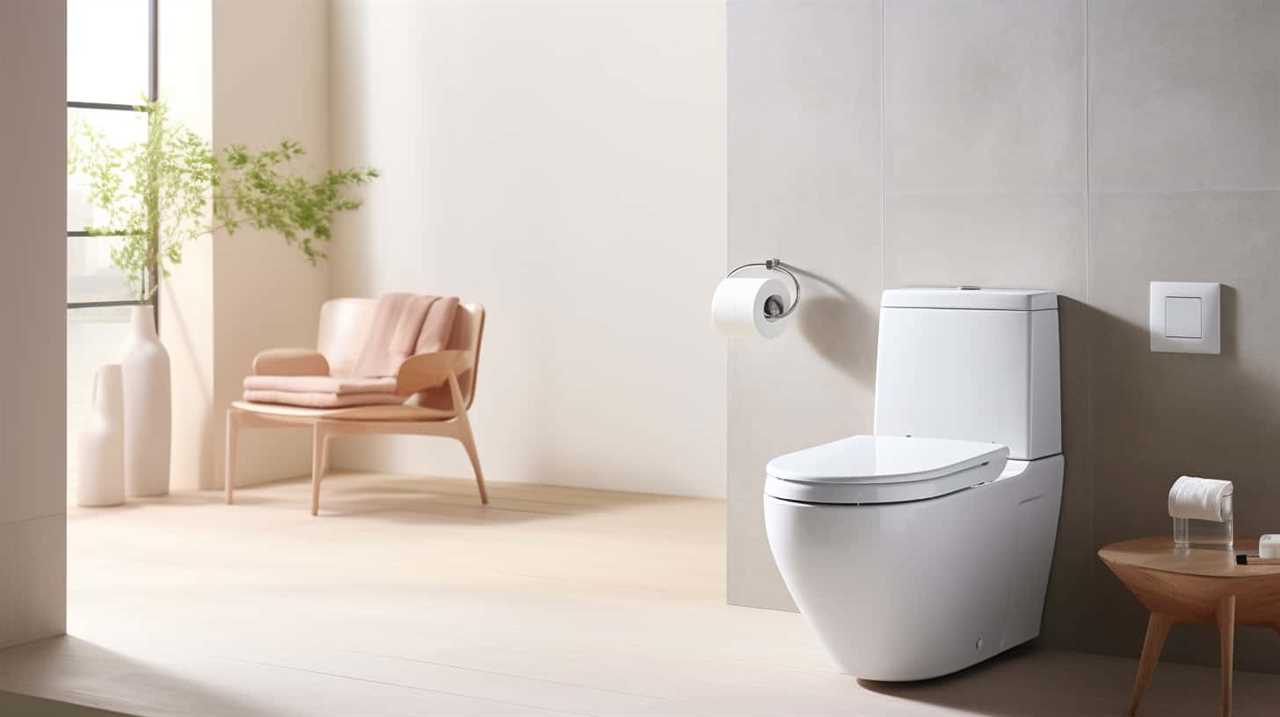
Are There Any Health Risks Associated With Not Flushing the Toilet Every Time?
Not flushing the toilet every time can have potential health risks. Bacteria and germs can spread, leading to increased chances of infection. Additionally, it can save water and reduce water usage, benefiting the environment.
How Does Water Conservation Play a Role in the Decision of Whether or Not to Flush the Toilet Every Time?
Water conservation is a crucial aspect to consider when deciding whether or not to flush the toilet every time. By reducing unnecessary flushes, we can conserve water and minimize the environmental impact of our daily habits.
Can Not Flushing the Toilet Every Time Lead to an Increase in Odors and Bacteria in the Bathroom?
Not flushing the toilet every time can lead to an increase in odor and bacterial growth in the bathroom. It is important to maintain proper hygiene by flushing after each use to prevent these issues.
What Are Some Specific Considerations for Public Restrooms When It Comes to Deciding Whether or Not to Flush the Toilet Every Time?
In public restrooms, specific considerations should be made when deciding whether or not to flush the toilet every time. Factors such as water conservation, cleanliness, and odor control are important to maintain a pleasant and hygienic environment.
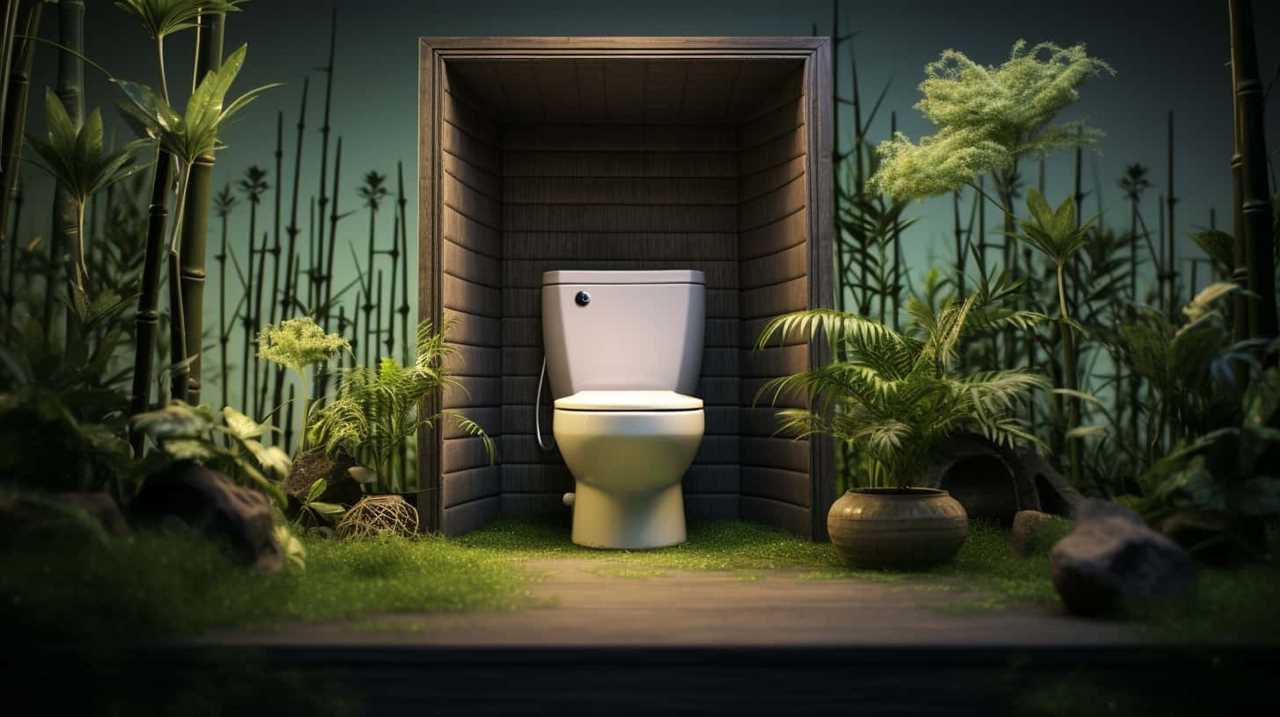
Conclusion
In conclusion, while it may seem convenient to flush the toilet every time we use it, there are compelling reasons to reconsider.
By being mindful of our environmental impact, promoting health and hygiene, conserving water, and controlling odor and bacteria, we can make a positive difference.
So next time you visit a public restroom or even your own, think twice before reaching for that flush handle.
Let’s strive for a cleaner, healthier future by making conscious choices in our bathroom habits.
